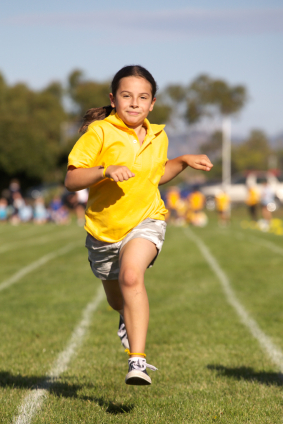
The pull of the video screen is incredible, isn’t it? Students love working on computers in their classrooms, and then they go home and want to dive right back into e-mailing their friends and playing online games. Add to that the constant calling and texting on cell phones, and you might imagine we are developing a population with a fantastic intellect but a dismal future when it comes to physical health.
In the face of such technological and social forces, we as educators must not underestimate the importance of physical education and health literacy. As a nation, we are lumbering heavily down the wrong track. One in three Americans will develop diabetes, dying 10-15 years too soon. The prevalence of childhood obesity has doubled since the 1980s. And, with the abundance of processed foods, it’s getting harder and harder for students to make healthy choices.
Most everyone understands—especially those of us who have taught in the classroom—that time spent in vigorous physical activity during the school day helps students stay alert and more attentive during intensive classroom time. But I recently read an article that expanded my thinking on the subject. On June 7, 2010, the New York Times published a blog, Phys Ed: Your Brain on Exercise, by Gretchen Reynolds. The article outlines the research done in the 1990s by Dr. Fred Gage and his colleagues at the Laboratory of Genetics at the Salk Institute in San Diego, as well as that of Dr. Jack Kessler, the chairman of neurology at Northwestern. Together, their studies show that physical exercise is not just important for building healthy muscles, hearts and lungs. It is essential for a healthy brain, too. As it turns out, maintaining a healthy noggin depends partly upon the presence of a chemical called, interestingly enough, noggin.
Dr. Gage’s research discusses the interplay of two chemicals that affect brain development: bone-morphogenic protein (BMP), which helps control cell division, and noggin, which is involved with the production of new brain cells. These two chemicals are in constant competition, pushing back and forth and creating balance in the production of brain cells. As the years pass, our brains become less and less able to produce these cells, and BMP slows things down even more. In short, just as our muscles do not rebuild themselves as well when we get older, our brains likewise become less able to replenish their tissues.
So, how does exercise help? It does two things: it lowers the amount of BMP AND increases the presence of noggin. In Dr. Kessler’s lab tests, the mice who received more exercise not only had more noggin in their brains, but they performed better in mazes and other tests. In his words, they were "little mouse geniuses, if there is such a thing."
The research exploring the connections between exercise, BMP and noggin are ongoing. But we now know that exercise clearly helps ensure that our bodies AND brains stay healthy. For me, the science points once again to something that we as educators cannot ignore. We should not underestimate the importance of a solid physical education program. In addition, we can add to that the physical fun and play of recess, and help our students create life-long habits that contribute to maintaining healthy bodies as well as healthy noggins.

